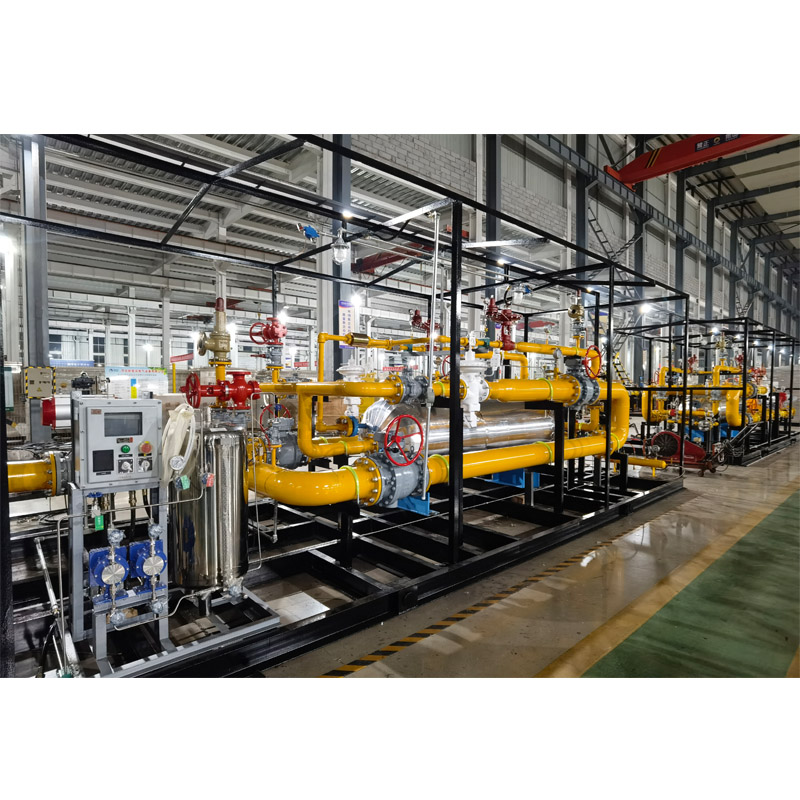
Nov . 14, 2024 19:13
Back to list
cyclone separator
Understanding Cyclone Separators Functionality and Applications
Cyclone separators, also known simply as cyclones, are widely used in various industries for the separation of particulate matter from gas or liquid streams. Utilizing the principles of centrifugal force, these devices efficiently remove dust, debris, and other unwanted particles, making them essential in fields such as air pollution control, chemical processes, and food production.
How Cyclone Separators Work
The operation of a cyclone separator is relatively straightforward yet highly effective. The device typically consists of a cylindrical body, a conical bottom, and an inlet located tangentially to the cyclone's wall. When a mixture of gas and particulate matter enters the cyclone, it spirals downward due to the tangential inlet design. This spiraling motion generates a centrifugal force that pushes the heavier particles towards the outer walls of the cyclone.
As the gas continues to rise, the lighter particles and gas mixture move towards the center of the cylinder. The centrifugal force effectively separates the heavier particles, which fall to the conical bottom and are collected in a hopper or discharge port. The cleaned gas then exits through a central outlet at the top of the cyclone.
Advantages of Cyclone Separators
One of the primary advantages of cyclone separators is their simplicity and robustness. They have no moving parts, which minimizes maintenance requirements and decreases the likelihood of mechanical failure. Cyclones can operate in a wide range of temperatures and pressures, making them versatile for various industrial applications.
cyclone separator

Furthermore, cyclone separators are efficient at removing large particles, often achieving separation efficiencies of 90% or more for particles larger than 10 micrometers. They are particularly useful in processes that generate high dust loads, as cyclones can handle large volumes of gas without significant pressure drops.
Applications
Cyclone separators find applications across numerous industries. In the mining and mineral processing sectors, they are employed to enhance the efficiency of separation processes. In the pharmaceutical and food industries, cyclones help maintain product purity by removing contaminants. They are also extensively used in the oil and gas sector to separate solid particles from gas streams.
Air pollution control is another critical area where cyclone separators excel. They serve as pre-cleaners for baghouse filters and are often integrated into dust collection systems to help meet environmental regulations and keep operational facilities compliant.
Conclusion
In conclusion, cyclone separators are vital instruments in modern industrial processes, offering an effective and economical method of particulate matter separation. Their simplicity, efficiency, and versatility position them as indispensable tools in various applications, from manufacturing to environmental protection. As industries continue to evolve and demand higher performance standards, the role of cyclone separators will undoubtedly grow, ensuring cleaner processes and safer environments.
Next:
Latest news
-
Safety Valve Spring-Loaded Design Overpressure ProtectionNewsJul.25,2025
-
Precision Voltage Regulator AC5 Accuracy Grade PerformanceNewsJul.25,2025
-
Natural Gas Pressure Regulating Skid Industrial Pipeline ApplicationsNewsJul.25,2025
-
Natural Gas Filter Stainless Steel Mesh Element DesignNewsJul.25,2025
-
Gas Pressure Regulator Valve Direct-Acting Spring-Loaded DesignNewsJul.25,2025
-
Decompression Equipment Multi-Stage Heat Exchange System DesignNewsJul.25,2025

